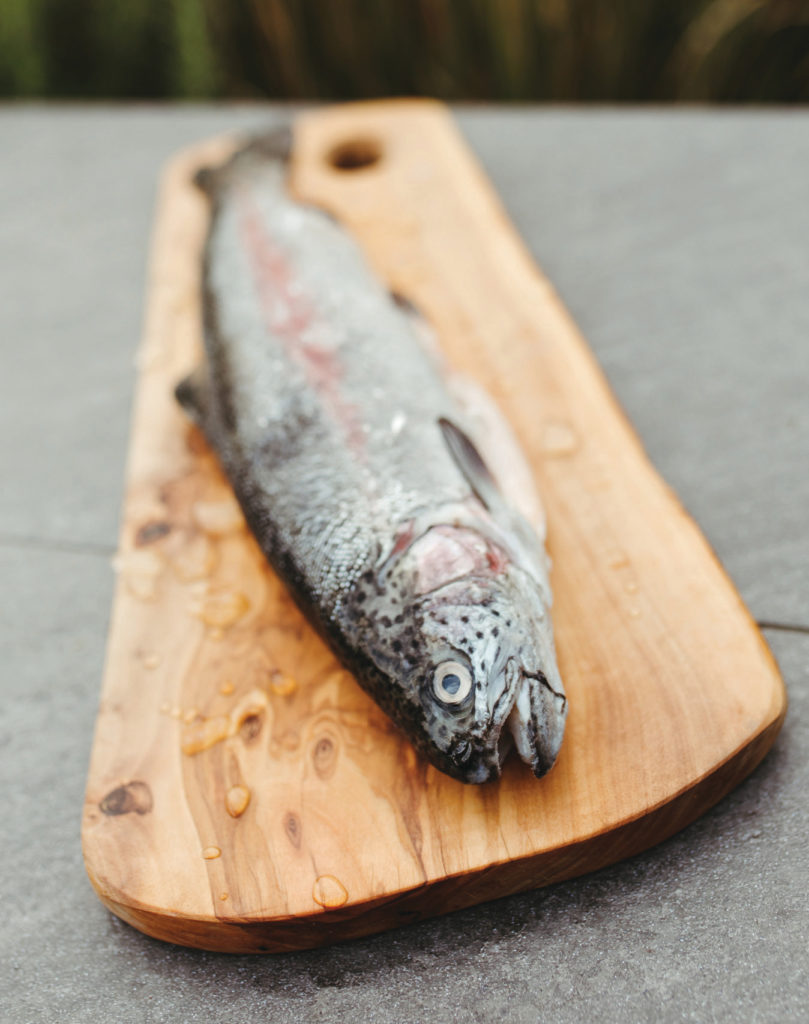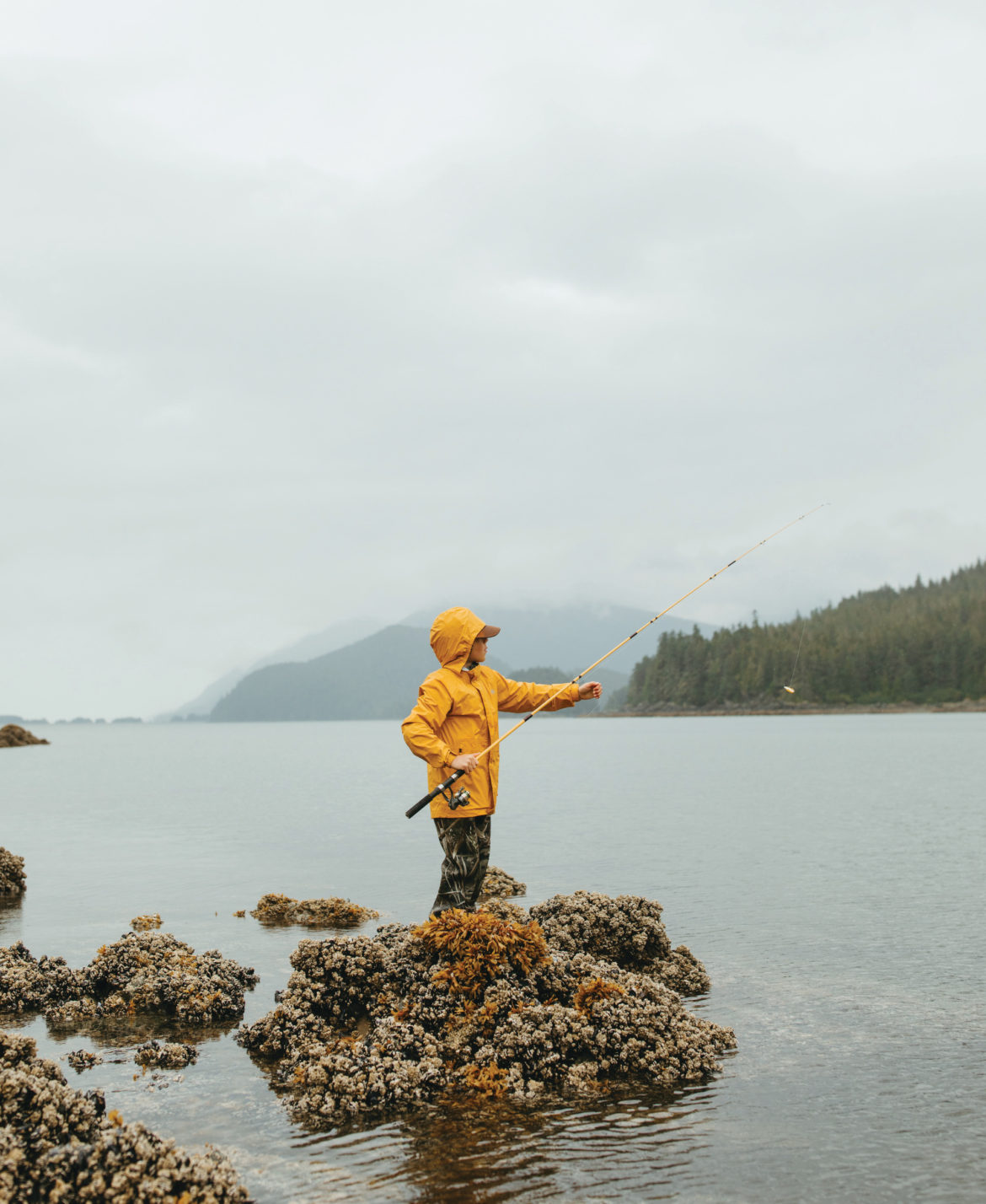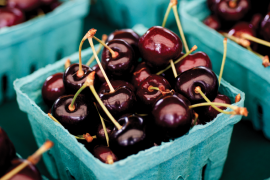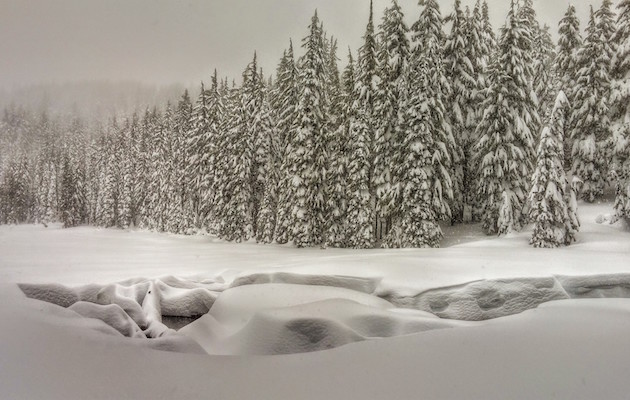One man’s journey from child angler to fishmonger businessman and sustainable seafood advocate
written by Julie Lee
Trout is Oregon’s most popular fish to catch and eat, with several trout species, both indigenous and adopted decades ago, to pursue. The most common is rainbow trout, which is widely stocked and distributed throughout the state. Redband trout are native to Central Oregon and historically found throughout waters connected to the Deschutes River. Paulina Lake, also in Central Oregon, boasts the state record trophy brown trout, weighing in at more than 28 pounds.
Trout is generally found in cool streams and lakes, making Oregon a hot spot for this culinary delicacy. Historically, trout was a favorite of Europeans who noted catching it on Russia’s Kamchatka Peninsula in 1792, but rainbow trout is native only to North America’s lakes and rivers and a favorite of anglers.
Lyf Gildersleeve, president of Flying Fish Company in Portland, is a trout aficionado.
Fishing is a family affair for Gildersleeve—his career in the fishing industry started the year before he was born. The year was 1979, and his parents, Sandy and Craig Gildersleeve, launched the first Flying Fish Company in Sandpoint, Idaho. From the time Gildersleeve’s tiny hands could hold a fishing pole, there was one in them. He fished throughout his entire young life, eventually studying aquaculture at Harbor Branch Oceanographic Institute at Florida Atlantic University.
What started as born destiny morphed into a family industry. Flying Fish Company expanded across three states and launched dining options, including a food cart in 2010, a fish shack in 2011, a food stand in 2016, finally docking in February 2020 on East Burnside Street in Portland. At the same time, their fisheries are thriving in Portland as well as in Durango, Colorado and Sandpoint, Idaho.
Gildersleeve’s children, 8-year-old son Miles and 11-year-old daughter Juniper, enjoy family backpacking trips where the sky is blue and the trout are jumping. His son recently caught his first salmon in Alaska, though favorite family destinations are around Mount Hood, at Timothy Lake or Trillium Lake, where lakes are well stocked in spring, for good, old-fashioned angling. Trout fishing isn’t so easy, as Miles discovered on a recent excursion, when, after catching a trout it flew out of his hands.
Gildersleeve doesn’t discriminate when it comes to types of fish or shellfish—he buys, sells, cooks and eats all kinds. He is extremely discerning, however, about the sustainability of the fish he buys and sells for his market and restaurant, meaning that it was harvested in a way that doesn’t threaten the ocean’s food supply, consumers’ health or the environment. New shipments of fresh fish, oysters and shellfish are expedited from sustainable suppliers to Flying Fish Company weekly.
“One of the most important things, especially as our wild fisheries continue to be challenged, is that customers start paying more attention to where their product is from, and ask questions: Is it local? Is it domestic? Is it healthy to eat?” said Gildersleeve.
He said that 90 percent of seafood consumed in the U.S. is imported, even though the country has numerous renowned fisheries. Foreign markets quickly snatch up American seafood, because they’re willing to pay more, Gildersleeve said. Then the U.S., in turn, imports fish that’s so low in quality that isn’t healthy. “There’s a disconnect,” he said.
He recommends an easy way for consumers to get answers to three critical questions before consuming fish. First, where is the fish coming from and is it sustainable? Second, is the species environmentally safe to eat? Third, if choosing a farm raised product, how was it raised? Was it enhanced in any way? Was color added? These are all easily answered with a quick search on Monterey Bay Aquarium Seafood Watch, www.seafood-watch.org, a global leader in the sustainable seafood movement, which quickly shows whether a certain type of seafood is a good choice or should be avoided.
A Gildersleeve family favorite is trout for these reasons and more. “Trout is awesome,” he proclaimed. “It’s sustainably raised and has year-round availability, making it a stable option.”

Where are the best places to catch trout, according to Gildersleeve? “Deschutes is the best place for trout, with its resident population,” he said. “What makes a good resident-trout river is one where the insects thrive, which is what trout eats.” The coast is another great option for trout fishing as well as a farm on Sauvie Island, the Island Springs Hatchery, he said.
His business is doing well during the pandemic, with his market sales doubling in the past year. “The biggest challenge in the seafood industry is inventory and pricing—prices have skyrocketed,” he says. Another challenge is that the restaurant industry has been in upheaval, and fish can go bad in a couple of days, making it a sensitive item to list on a menu. Consumer education is an issue, too. “Seafood can be intimidating to cook and is susceptible to overcooking,” Gildersleeve said.
Many recipes for delicious dishes, however, are easy to try at home. Gildersleeve shared a simple one for Cedar Planked Trout with local Jacobsen Salt Co. Seafood Seasoning and plenty of fresh, aromatic herbs such as parsley, thyme, dill and cilantro. (See pg. 31)
A bounty of Oregon Dungeness crab is another reason to put this crustacean on your shopping list. Oregon Dungeness Crab Commission reported that the Dungeness harvesting season opened on December 1—for the first time since 2014. January and February are perfect times to celebrate the confluence of two Oregon seafood greats: an Oregon Dungeness Crab Stuffed Trout recipe, courtesy of Chef Leif Benson, culinary ambassador to the Oregon Dungeness Crab Commission. (See pg. 31)
Chef Matt Hobbs with NORR Kitchen, a video and photo production studio and test kitchen turned eatery with fantastic takeout options in Portland, elevates the versatility of trout with his take on it: a recipe for Ocean Trout with Pole Beans, Zucchini, Pistachio Vinaigrette and Sweet and Sour Pomegranate. (See pg. 30)









